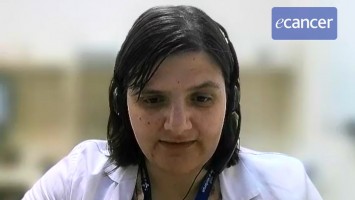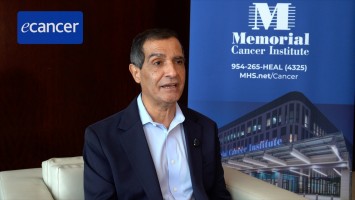AACR 2012 Annual Meeting, March 31st - April 4th, Chicago
Targeted therapy for refractory Ewing’s Sarcoma tumours
Dr Aung Naing – University of Texas MD Anderson Cancer Center, Houston, USA
I will be presenting the data which is an IGF-1R inhibitor, cixutumumab, with an mTOR inhibitor in patients with a refractory Ewing’s Sarcoma family of tumours. This is a multi-centre phase I clinical trial conducted at the MD Anderson Cancer Centre and Wayne State University. This trial was supported by R21 Grants.
I have the following disclosure: IGF-1R in mTOR pathway are important for the cell survival, angiogenesis, proliferation and resistance to the chemo and radiation. Temsirolimus blocks the mTOR complex, cixutumumab is a full human monoclonal antibody that blocks IGF-1R. So when temsirolimus blocks the mTOR complex that can lead to resistance. The resistance is through the negative feedback system, this is mediated by IGF-1R. Therefore, by blocking IGF-1R with cixutumumab we hope to overcome the resistance.
Preceding to this abstract, we have done dose escalation where we found some anti-tumour activities in patients with Ewing’s Sarcoma, therefore we have done further dose expansion in this particular disease. I’m going to present a group of twenty patients, seventeen of them have Ewing’s Sarcoma and three patients have desmoplastic small-round-cell tumours. We are including desmoplastic small-round-cell tumours in this analysis because it is closely related to Ewing’s Sarcoma, even though some may argue that the response may be short-lived.
The patient population is here, the median age is 24. Most of the patients were heavily pre-treated with the median number of prior therapies being six. So we have seven out of twenty patients, 35% had stable disease over five months and complete response including two patients with desmoplastic small-round-cell tumours. Five out of seventeen patients with a Ewing’s Sarcoma had stable disease and complete response. In fact, three patients had stable disease from eight to eighteen months and two patients have complete response. Interestingly, one of the patients who achieved complete response, in fact, had resistance to prior IGF-1R inhibitors.
The most important thing is these are the patients who have been heavily pre-treated before. So how did they do on the study? Most of the patients had no side effects that would limit their performance status and most of the side effects are grade 1 and 2.
Four of our best respondents have grade 3 mucositis, myelosuppression and hyperglycaemia. Generally these side effects would mandate that the patient be removed from the study, however we were able to continue with the treatment, thereby sustaining their response. The responding patients with a manageable toxicity should continue on the study with supportive treatment.
In conclusion, 29% of heavily pre-treated patients benefit from this study, do achieve complete response. Patients who are getting the benefit with manageable toxicity should continue with the study. Cutting edge technology was used to sequence the tumour and to identify what the resistant pathways are.
What is next? Our colleague at the Sarcoma Group, Dr Joe Ludwig, is planning to have a clinical trial with a larger number of patient population early in the course of their disease. Also we plan to look at the resistance mechanism in individual patients.








